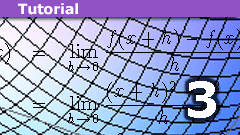To deal with fiber bundles is to a large extent linguistical. It is the one before the last stop on the path of generalization from a directional derivative to differential geometry. The last stop is connections. The treatment depends a bit on the authors so consulting different sources before you understand your textbook can be confusing.
I would use the nomenklatura of your textbook only and do everything on an example in parallel. Since we eventually want to draw something, it is better to use real examples. Flat Euclidean spaces will add confusion since they as a manifold will be equal to themselves as a tangent space. So it's better to use something curved. My preferred examples would be the unit sphere [imath] \mathbb{S}^2\subseteq \mathbb{R}^3 [/imath] with local polar coordinates, and the two-dimensional non-abelian Lie group generated by [math]G= \bigl\langle \begin{pmatrix}t&0\\0&t^{-1}\end{pmatrix}\, , \,\begin{pmatrix}1&c\\0&1\end{pmatrix} \bigr\rangle .[/math]These are nice and smooth manifolds, and a possible function, if necessary, could be a three-dimensional rotation of the sphere, or an application of elements from [imath] G [/imath] on [imath] (x,y)\in \mathbb{S}^2. [/imath] I would avoid the stereographic projection because it would involve projective spaces that would make the situation unnecessarily more complicated. For a function on [imath] G, [/imath] again if necessary, one can take the determinant or the group multiplication with a fixed element [imath] g\in G\, , \, h\mapsto g\cdot h \,. [/imath]
Now you can deal in parallel with the theoretical questions like the triviality of the tangent bundles, and an specific example. The group [imath] G [/imath] is easy and low-dimensional enough to produce nice curves on it, and complicated enough to serve as a meaningful example.
I think the reason your author didn't deal with the fact that the tangent bundle is trivial is the following:
a) A vector bundle, here the tangent bundle, is trivial if it has a global trivialization.
b) A trivialization is if there is a homeomorphism [imath] \varphi : U\times \mathbb{R}^n\longmapsto \pi^{-1}(U) \subseteq E \text{ total space }[/imath] for every [imath] p\in U\subseteq B \text{ base space } [/imath] that behaves nicely with the projections: [imath] \pi \circ \varphi =\operatorname{proj}_1 [/imath] and such that [imath] \{p\}\times \mathbb{R}^n \cong_\varphi \pi^{-1}(p). [/imath] (Up to the usual quantifiers: for every [imath] p\in M [/imath] there is a open neighborhood [imath] p\in U\subseteq B [/imath] such that ...)
In the case of a tangent bundle, we have
[math]
\displaystyle{E=TM= \bigsqcup_{p\in M} \{p\}\times T_pM \, , \,B=M\, , \,\pi:E\longrightarrow B\, , \,\pi(p,T_pM)=p}
[/math]Let's check the trivialization now. Global means we require [imath] U=B=M. [/imath] For the trivialization, we set
[math] \varphi : M \times \mathbb{R}^n \longmapsto \pi^{-1}(M).[/math] This is clearly a homeomorphism since [imath] \varphi (p,\mathbb{R}^n) =\pi^{-1}(p)=(p,T_pM)[/imath] and [imath] T_pM\cong \mathbb{R}^n [/imath] is a simple identification. Remains to show whether the projections behave nicely. This is a formality since we only operate with simple identifications and natural projections.
[math] (\pi \circ \varphi )(p,\mathrm{v})=\pi( \varphi (p,\mathrm{v}) )= \pi ( \pi^{-1} (p) )=p=\operatorname{proj}_1 (p,\mathrm{v}) \;\text{ for all }\mathrm{v}\in \mathbb{R}^n [/math]and of course
[math] \{p\}\times \mathbb{R}^n \cong \{p\}\times T_pM = \pi^{-1}(p)\;. [/math]

